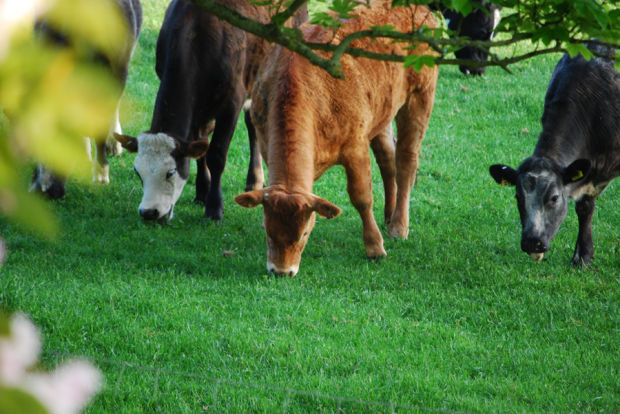MAHA’ULEPU — Hawaii Dairy Farms may be back to square one with its environmental impact statement, a process that started with the release of its draft EIS in June. On Jan. 17, HDF submitted its final environmental impact statement to
MAHA’ULEPU — Hawaii Dairy Farms may be back to square one with its environmental impact statement, a process that started with the release of its draft EIS in June.
On Jan. 17, HDF submitted its final environmental impact statement to the state’s Department of Health for review, but then withdrew the FEIS from consideration Feb. 21.
DOH still stated its position on the matter in a letter to HDF Tuesday.
“If HDF decides to file another environmental impact statement with DOH, in these circumstances HDF’s filing would need to be a second draft Environmental Impact Statement, not an FEIS,” the letter says. “DOH will not accept a FEIS in this case where an EIS does not first go through a second draft environmental impact statement process.”
Amy Hennessey, spokeswoman for HDF, said the company is disappointed with DOH’s determination, but “we respect the agency’s determination.”
“We believe the Department of Health’s decision, coupled with the Office of Environmental Quality Control’s more rigorous guidance on responses to comments, has far reaching consequences to all future development projects that require an EIS,” she said. “We are currently evaluating the impact of this determination on the project’s timeline.”
The environmental impact statement addresses the effects the planned dairy could have on the surrounding 557-acre site in Maha’ulepu Valley.
HDF says the plan is to start with 699 mature cows and possibly move up to a maximum of 2,000.
Members of the grassroots organization, Friends of Maha’ulepu, which has been following the proposed industrial dairy since April 2014, submitted many of those comments.
“We learned HDF’s plan was not sustainable,” said Bridget Hammerquist, on behalf of Friends of Maha’ulepu. “(It was) dangerously flawed, with too many dairy cows, on too small an area with too much manure left on the ground. The risk of runoff from the clay soils of Maha’ulepu would be disastrous.”
Water quality and runoff concerns are among the comments that the OEQC said needed more attention, and members of FOM and Surfrider Kauai’s Blue Water Task Force agree.
The Blue Water Task Force has sampled the water coming from the Waiopili Stream and the surrounding area at Maha’ulepu for three years.
“HDF still needs to prove that its operations will not harm the drinking water and recreational waters of the area,” said Carl Berg, head of the Blue Water Task Force.
Berg pointed to the muddy state of the ocean from the recent storm system. A DOH brown water advisory is in effect today due to the amount of runoff going into the ocean from the event.
“Rainfall produced heavy runoff silting up Waiopili Stream and turning the ocean muddy from Mahaulepu to Poipu,” Berg said. “Imagine if the wastes from 2,000 cows were added to that runoff. What are the effects on the coral reefs?”
In addition to the requirement HDF go through the entire EIS process again, including the public scoping and comment processes, the letter said a second DEIS would “provide the public an opportunity to formally address several studies that were submitted with the proposed FEIS on January 17.”
HDF and DOH did not provide details on the information contained in those studies before deadline.
“It’s a big deal that they did additional studies there and never brought it to the public’s attention, nor was the public allowed to comment on it,” Hammerquist said. “In the FEIS, the public never had an opportunity to read the additional studies done after the close of public comment.”
Though it’s a big step backward for HDF and the entity is still considering its next step, Hennessey said their mission remains the same.
“We’re committed to continuing our work with regulators and the community to bring the first pasture-based dairy to fruition,” Hennessey said.


